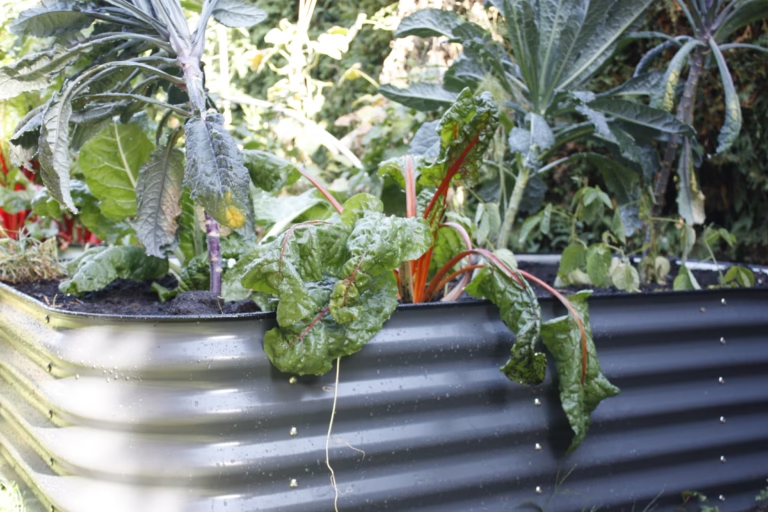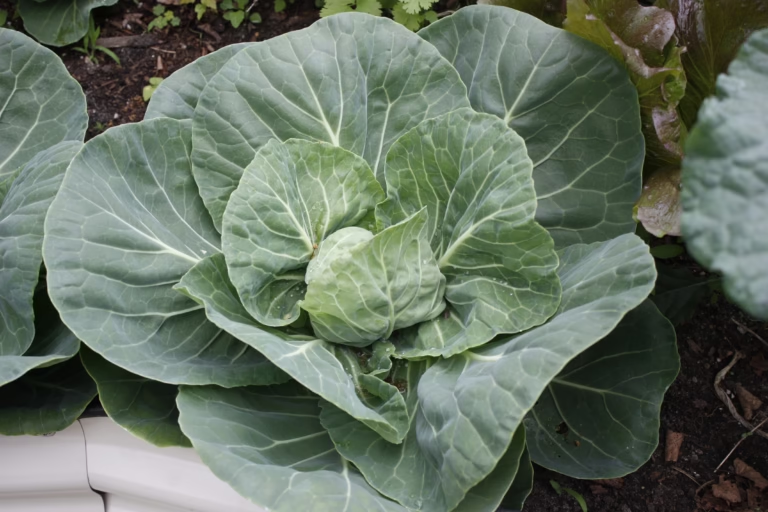
Save Hundreds on Groceries with These 4 Tips

Over the past few years we’ve seen a massive increase in the price of groceries making it more difficult to buy fresh fruit and vegetables for our families. In addition, food banks across the country are seeing more strain than they ever have before. The worst part? Grocery prices are expected to continue rising over the next 5 years. The good news is that you can take control of a portion of your grocery bill by learning how to grow your own food.
In this article I have 4 tips to help you strategically plant your garden and help balance the rising cost of groceries, saving you hundreds on food. The path to self-sufficiency can help you save money, give you more control, while being prepared for what the future may hold. It’s impossible to know what the future may hold, because let’s be real, between COVID-19 and the recent climate disasters, it’s starting to feel pretty apocalyptic!
Rising Cost of Food and Groceries
Ever since the COVID-19 pandemic, the price of groceries has gone up significantly. At the time of this writing, grocery prices were over 20% higher than 2019, and continue to rise (but thankfully at a slower rate). This massive increase in prices is putting a major strain on individuals and families across the nation. If you’re feeling the strain of food prices, you’re not alone. Food insecurity is on the rise, and people are having to struggle to make ends meat.
There are multiple reasons over the past 4 years that we have caused food prices to go up; from corporate greed, to supply chain issues and even to the climate crisis. However, I want to show you 4 tips on how you can use your garden to effectively bring down the cost of your grocery bill so you can save hundreds of dollars a year. If you don’t have a garden yet or are looking to expand and want to save money, check out my e-book on How to Garden for (Almost) Free for ideas to continue to reduce your grocery bill.
Tip 1: Grow the Foods that are the Most Expensive
The first tip on how to lower your grocery bill is to focus on growing the most expensive food that is sold at the grocery stores (as long as it can be grown in your zone).
Fruit

Grapes and apples are some of the most expensive fruit to buy in Canada. Although we can’t grow all varieties of grapes and apples, we can grow some! Berries are another expensive fruit to buy, but many grow easily here and can give big harvests! If you plan to stay in your home for a few years, planting grape vines, apple trees or berry bushes can help reduce your grocery bill on fresh fruit in just a couple of years.
If you want to get fruit sooner, consider planting strawberries as they will fruit for you in the same year you plant them.
Many neighbourhoods have established fruit trees where neighbours are happy to give away fruit. We received giant bags of plums and apples from our neighbours this year which we processed and froze for later in the winter and this is another way you can save on groceries! Reach out in your neighbourhood group chat and see what is available.
Check out our FREE interactive square foot gardening tool here! With built-in shopping list!
Vegetables

According to Canadiangrocer.com, vegetable prices rose by 4.4% in August 2024 (on already high prices!) with some vegetables seeing double digit increases. That is scary!
But the good news is that these vegetables can easily be grown at home! Onions and peppers saw some of the highest increases (over 10%!), while lettuce and tomatoes rose by 5% on average. All four of these vegetables are super easy to grow at home! If you eat these vegetables, plan to include them in your garden so you can beat the rising food prices and save on groceries!
Tip 2: Grow the Foods that You Eat the Most Often

Another great way to save on groceries is to grow the foods that you eat most often. Some foods are not experiencing the same inflation as others (potatoes, for example) but by growing them at home you get access to local, organic food and don’t have to pay for them at the store, no matter their price.
Make a list of your favourite fruits and vegetables that you buy and eat most often. Compare that list to your growing zone to make sure that you can grow them in your yard, and add these to your garden in the upcoming season!
Continue growing your garden knowledge
- Grobox Garden Raised Bed Review
- How to Invite Ladybugs into Your Garden
- How to Grow Cabbage from Seed to Harvest
- Your Most Asked Raised Garden Questions ANSWERED
- 6 Tricks to Grow Massive Onions in Cold Climates
Tip 3: Grow Foods that Mature Quickly

Another way to be more self-sufficient and to save money on groceries is to grow foods that mature quickly. What this means is from the time you plant them to the time you eat them is super quick! These types of plants are perfect for being more self-sufficient and having access to food quickly. Another benefit, is if there is ever a time where we experience food shortages (or some other apocalypse!) you will know how to grow some of the most important food, those that can be eaten quickly.
Some quick growing vegetables include; spinach, radish, lettuce, turnips, kale, peas, bush beans and strawberries! These plants will give you food in 1-2 months which is a quick turnaround in the gardening world.
By growing plants that mature quickly, you can cut down your grocery bill within just a few weeks of starting.
Tip 4: Grow Foods That are Heavy Producers

Another strategy to save on groceries is to grow foods that are heavy producers. These are foods that produce more food than the space they take up, such as; zucchini, beans, strawberries, raspberries, blackberries, tomatoes, certain peppers, soybeans, swiss chard or kale.
Avoiding plants that take up a lot of space for a small yield means you can have an abundance of certain foods that you can eat fresh, preserve or save for later. Buy the foods that are less efficient (such as broccoli, cauliflower, cabbage) since you will need to purchase less of them.
By using one or all of these tips you can save hundreds of dollars on your grocery bill over the season by growing the food that you love and eat the most. Worry less about your grocery bills and start eating more of what you love!






